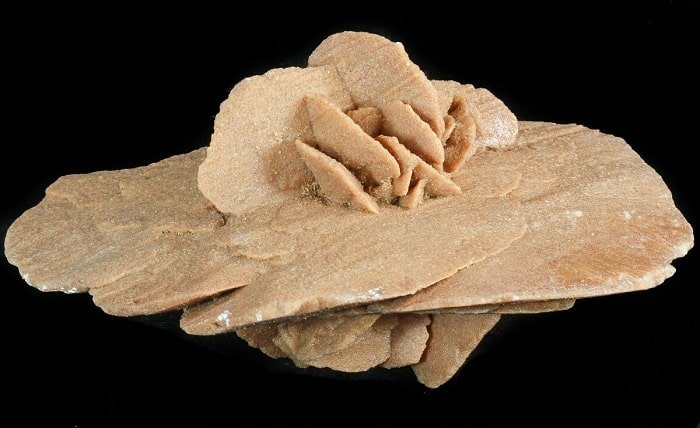The Sahara Desert Rose: Unveiling the Mystery of Nature’s Gypsum Crystals

Amidst the vast expanse of the Sahara Desert, where the sun scorches the sands and the wind whispers tales of ancient times, lies a captivating natural wonder, the Sahara Desert Rose. These delicate gypsum crystals, resembling the intricate petals of a rose, emerge from the arid landscape, a testament to the enduring power of nature’s artistry.
The Origins of the Desert Rose: A Tale of Sand and Gypsum
The Sahara Desert Rose, also known as the sand rose or gypsum rose, is a natural formation composed of gypsum, a hydrated calcium sulfate mineral. Its formation is attributed to a unique interplay of sand, gypsum, and wind, a process that takes place over hundreds or even thousands of years.
The Journey of a Gypsum Crystal: From Dune to Rose
The journey of a gypsum crystal begins with the weathering of gypsum-rich rocks, carried by wind and deposited in the sandy expanse of the Sahara. As rainwater percolates through the sand, it dissolves the gypsum, forming a concentrated solution. When this solution evaporates, gypsum crystals begin to form, growing outward in intricate patterns.
The Shaping of the Desert Rose: A Dance of Wind and Sand
The wind plays a crucial role in shaping the Desert Rose, sculpting its delicate petals and transporting fine sand particles that become embedded within the crystal structure. This process gives the Desert Rose its characteristic texture and adds to its unique aesthetic appeal.
The Colors of the Desert Rose: A Palette of Nature’s Hues
The Desert Rose comes in a variety of colors, ranging from soft white and ivory to warm hues of pink, orange, and even red. These colors are determined by the presence of impurities within the gypsum crystals, such as iron oxides or clay minerals.
The Cultural Significance of the Desert Rose: A Symbol of Beauty and Resilience
The Desert Rose holds significant cultural meaning for the people of the Sahara, often seen as a symbol of beauty, resilience, and the enduring power of nature. It is often used as a decorative element in homes and traditional crafts, and it also features in folklore and storytelling.
Conclusion:
The Sahara Desert Rose stands as a testament to the beauty and artistry that can emerge from the most unlikely places. Its formation, a delicate balance of sand, gypsum, and wind, speaks to the enduring power of nature’s creative forces. And its presence in the harsh desert environment serves as a reminder of resilience and the ability to find beauty even in the most unexpected places.
FAQ:
What is the chemical composition of the Sahara Desert Rose?
The Sahara Desert Rose is primarily composed of gypsum, a hydrated calcium sulfate mineral with the chemical formula CaSO₄·2H₂O.
How does the wind contribute to the formation of the Desert Rose?
The wind plays a crucial role in shaping the Desert Rose, sculpting its delicate petals and transporting fine sand particles that become embedded within the crystal structure.
In what colors does the Desert Rose occur?
The Desert Rose comes in a variety of colors, ranging from soft white and ivory to warm hues of pink, orange, and even red. These colors are determined by the presence of impurities within the gypsum crystals.
What cultural significance does the Desert Rose hold?
The Desert Rose holds significant cultural meaning for the people of the Sahara, often seen as a symbol of beauty, resilience, and the enduring power of nature. It is often used as a decorative element in homes and traditional crafts, and it also features in folklore and storytelling.
Where can I find the Sahara Desert Rose?
The Sahara Desert Rose is primarily found in the Sahara Desert, particularly in areas with gypsum-rich soils. However, similar formations have been discovered in other arid regions around the world.




